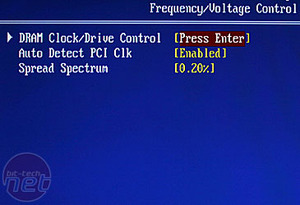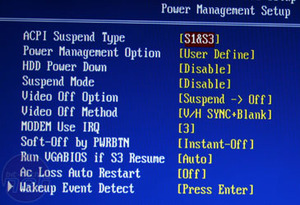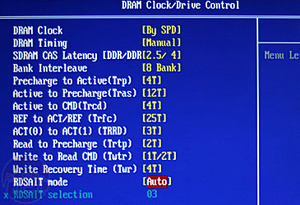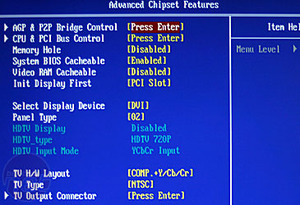EPIA EX 15000G
Rear I/O
The rear I/O of the EPIA is certainly something that could make some A/V enthusiasts wet themselves with delight. Not only is there optical and digital coaxial S/PDIF but also DVI, S-Video, composite, coaxial stereo audio and component outputs on-board.For actual inputs though there are just two USB ports and a single RJ45 Ethernet socket. As much as we love the rear I/O for its innovation and unique appeal we feel it compromises in too many areas.
For example the 4-pin S-Video port could be changed to a 7-pin socket for the same physical space which can potentially provide a breakout cable for component, S-Video and composite as well as video input as well. That would free up a ton of space for some more USB ports and perhaps some 3.5mm audio jacks.
At the moment it's a choice between S/PDIF, coaxial A/V connectors or nothing, unless your case comes with some front panel audio connectors. A break out cable might not be as neat but it's still hidden at the back of a case and it provides room for essential additional functionality.
Its inclusion of DVI over HDMI means you can connect an LCD up to it easily, but without an adapter like what comes with ATI's HD 2000-series graphics cards you have to use five cables rather than just one for an HDTV. The chipset and board lacks HDCP though, which means any thought of using this for HD playback of protected content like HD DVD or Blu-ray is already out of the question. So much for investing in future-proof hardware.

BIOS




There are no voltage of frequency controls, and since the CPU is soldered to the board you'll not be overclocking. There are memory timings to adjust, but with no increment in voltages you'll be hard pushed to eek out that extra performance from your memory. Since the board features a whole load of on-board video options there are an number of BIOS options to compensate it, however it can get quite confusing.
Knowing what Panel Type you have for example, or identifying what display device corresponds with which particular connection can be a case of trial and error. There are quite a few non-standard BIOS options featured, and since there is no manual included it makes understanding what they do all the more difficult.

MSI MPG Velox 100R Chassis Review
October 14 2021 | 15:04









Want to comment? Please log in.